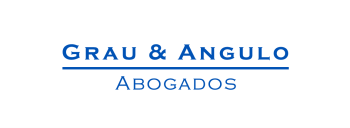On December 19 2012 the Barcelona Court of Appeal issued a judgment confirming a previous decision of Barcelona Commercial Court No 4, which dismissed a patent infringement action filed by Lundbeck against escitalopram generics, including those of Cinfa, Normon, Sandoz, ratiopharm, Stada, Actavis and Kern.
Lundbeck is the holder of a supplementary protection certificate (SPC) derived from European Patent EP347066-B1, which has a special set of claims for Spain protecting a certain manufacturing process for the active ingredient escitalopram. Escitalopram is an anti-depressant commercialised by Lundbeck under the trademark CIPRALEX.
Lundbeck sued various companies for infringement of its SPC, arguing that their generic products contained escitalopram manufactured by its patented process. In particular, Lundbeck argued that the escitalopram contained in the defendants' generics was not exclusively manufactured by the process declared by them (a process by Indian company Dr Reddy's, which falls outside the scope of Lundbeck's patent).
In an August 1 2011 judgment, Barcelona Commercial Court No 4 dismissed Lundbeck's infringement action in first instance proceedings.
The main grounds of Lundbeck's appeal against the first instance judgment were as follows:
- It did not apply the reversal of the burden of proof correctly (Article 61.2 of the Patents Act).
- It did not assess the evidence of the defendants properly. According to Lundbeck, the defendants would not have managed to prove that the escitalopram in their products was actually manufactured by Dr Reddy's process.
- It did not assess the impurity profile of the defendants' products properly. Lundbeck argued that the presence of certain impurities would indicate that its patented process had been used in the manufacture of their active ingredient.
Regarding the first ground, the Barcelona Court of Appeal concluded that the first instance judgment specifically addressed the issue of the reversal of the burden of proof and did so correctly by explaining why the evidence submitted by the defendants was sufficient to prove that the process actually used to manufacture the escitalopram contained in their medicaments was indeed Dr Reddy's process.
The appeal court also dismissed the second ground and confirmed the exhaustive examination made by the judge of all evidence submitted by the defendants (eg, drug master files, expert statements, certificates of analysis and batch production records), as well as the conclusions of the first instance judgment.
Regarding the third ground, the court analysed in turn each argument related to all the impurities appearing not only in the defendants' medicaments, but also in Lundbeck's Cipralex, and agreed with the first instance judgment. In particular, the court reached the following conclusions:
- According to the evidence provided by the defendants, Dr Reddy's obtains escitalopram with high optical purity using its own process.
- The minimal amounts of diol and Grignard impurities found in the defendants' products were insignificant and thus did not prove the use of Lundbeck's patented process to manufacture the escitalopram contained in them.
- The presence of minimal amounts of typical impurities of Dr Reddy's process (didesmethyl-escitalopram) in Lundbeck's Cipralex contributes to prove that any product contains minimal amounts of irrelevant impurities, which are no real tracers.
The appeal court's decision is not yet final, as Lundbeck could still appeal to the Supreme Court.
For further information on this topic please contact Ana-Laura Morales at Grau & Angulo by telephone (+34 93 202 34 56), fax (+34 93 240 53 83) or email ([email protected]).
This article was first published by the International Law Office, a premium online legal update service for major companies and law firms worldwide. Register for a free subscription.



